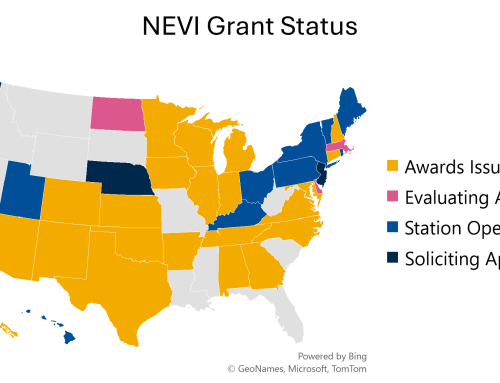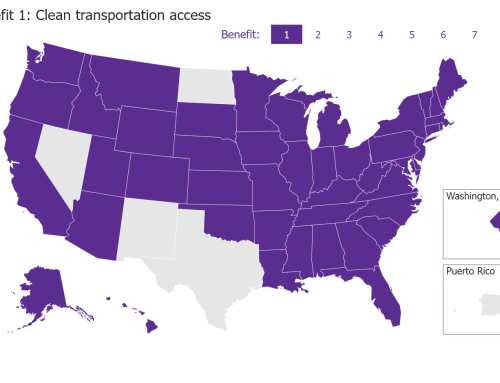
Source: Shutterstock
Last week, the U.S. Treasury and the Internal Revenue Service (IRS) announced its proposed guidance for the Clean Vehicle Credit, or Section 30D, a long-awaited move for the EV industry since the enactment of the Inflation Reduction Act (IRA) last August. My colleague Tom Taylor put out a useful summary of the EV provisions in IRA, including the possible implications of the tax credit for consumers and automakers on the eligibility of certain vehicles for the credit.
To recap, the full $7,500 EV tax credit is split up by a battery components requirement and a critical minerals requirement:
- $3,750 if the “vehicle is made with a battery manufactured or assembled in North America. This is based on a percentage of the value of components that will increase over time starting with 50 percent in 2023.”
- $3,750 if the “battery is constructed with critical minerals extracted in the United States or a country the United States has a free trade agreement with or recycled in North America. This is based on a percentage of components that will increase over time starting with 40 percent in 2023.”
In the new guidance, the IRS proposes a set of processes to determine the value of critical mineral content and battery components.
For determining the value of critical minerals in a battery, the IRS proposes a three-step process: 1) “determine the procurement chain”, 2) “identify qualifying critical minerals,” and 3) “calculate qualifying critical mineral content.”
For determining the value of battery components, the IRS proposes to 1) “identify battery components that are manufactured or assembled in North America,” 2) “determine the incremental value of each battery component, including North American battery components,” 3) “determine the total incremental value of battery components,” and 4) “calculate the qualifying battery component content by dividing the total incremental value of North American battery components by the total incremental value of all battery components.”
The Treasury guidance also makes reference of newly negotiated critical mineral free trade agreements, including the recent U.S. and Japan trade deal on EV battery minerals. According to Automotive News, the U.S. is also in talks with the European Union to negotiate a battery critical mineral deal. These trade deals would expand the number of countries where critical minerals may be extracted to qualify for the critical mineral portion of the tax credit.
However, as the industry looks for clarity with the guidance, some questions remain. Particularly, the guidance disqualifies vehicles that have been manufactured or assembled by a “foreign entity of concern” from the tax credit. At this time, the definition of a “foreign entity of concern” is not clear. Treasury will issue “subsequent guidance” on this provision.
According to the new guidance, the IRS will begin enforcing the domestic battery sourcing requirements in just two weeks on April 18, a move that may potentially disqualify a number of new EVs for the tax credit in the near term. Beginning on April 18, Treasury plans to make public a list of vehicles that are eligible for the tax credit and update that list monthly here.
As the requirements give manufacturers an incentive to invest and build a domestic supply chain, we expect to see more vehicles become eligible for the credit over time.
Here’s what groups are saying:
Earthjustice: Earthjustice Statement on Treasury Department’s Electric Vehicle Tax Credit Guidance
“We appreciate Treasury’s hard work on a challenging technical task, and we are pleased that the 30D tax credit will increase transparency in our vehicle battery supply chains. Knowledge is power, and we hope that better understanding around where our battery minerals come from will help automakers and policymakers improve human rights, labor conditions, and environmental impacts from mineral extraction, processing, transport, and recycling, both domestically and internationally.”
GM: GM says it expects some EVs to receive $7,500 U.S. tax credits
“We expect a number of our Ultium-based EVs, including the Cadillac LYRIQ and additional EVs launching this year like the Chevrolet Equinox EV SUV and Blazer EV SUV, to qualify for the full $7,500 credit in 2023,” GM said in a statement.
Alliance for Automotive Innovation: Transforming Personal Mobility
“Which EVs – make and model – now qualify for the tax credit… and which don’t? What’s in or out? Where is the website with the list?
Short answer: I don’t know. It’s not a question that can be answered today. Automakers will report directly to the IRS which EV models (effective April 18) meet the critical mineral and/or battery component requirements.
Here’s what I can say: this latest turn will further reduce the number of eligible EVs. Fewer vehicles (and fewer customers) will qualify for the full $7,500 credit in the near term.”


